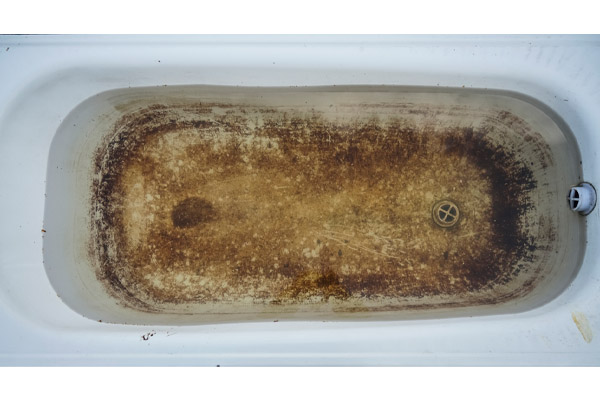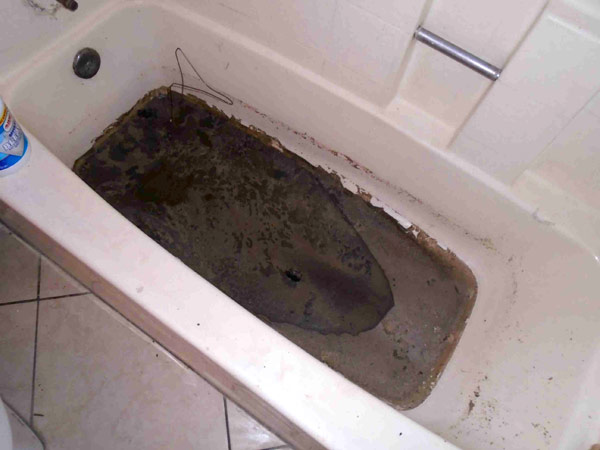Our Definitive Explanation: Waste Coming Up Through the Bathtub
Our Definitive Explanation: Waste Coming Up Through the Bathtub
Blog Article
They are making a few good pointers related to What to Do if Sewage Starts Coming Up Through Your Bathtub in general in this great article further down.

Sewer back-up in the bathtub can be a stressful and unhygienic trouble for any kind of homeowner. Not just is it troublesome, however it also poses major wellness threats and suggests underlying problems with the plumbing system. Understanding why sewer is showing up through the bath tub is important for taking proper action to deal with the trouble efficiently.
Intro to the Problem
Typical Reasons for Sewage Back-up
Clogs in the Sewer Line
Among the most usual reasons for sewage back-up is a clog in the sewage system line. This can occur due to the accumulation of debris, grease, or international objects in the pipelines, avoiding proper flow and creating sewage to back up right into your tub.
Tree Origin Intrusion
Tree origins seeking dampness and nutrients can penetrate drain lines via little splits or joints. Gradually, these roots can grow and increase, creating significant damages to the pipelines and bring about sewage back-up problems.
Understanding the Issue
When sewage draws back up into the bathtub, it's a clear sign of a problem with the drain system. The wastewater that needs to be streaming away from your home is rather finding its way back into your home, which can result in substantial damages and health hazards.
Prospective Reasons
A number of elements can add to sewer backup in the tub. From clogs in the sewer line to problems with the plumbing infrastructure, identifying the source is essential for discovering a solution.
Aging Framework
Older homes may have dated plumbing systems that are extra prone to rust, cracks, and wear and tear. As pipes age, they become a lot more vulnerable to leaks and clogs, increasing the likelihood of sewer back-up events.
Heavy Rainfall or Flooding
Throughout periods of heavy rainfall or flooding, the sewer system may end up being overwhelmed with excess water, triggering back-ups and overflows. This can cause sewer backing up right into bathtubs and various other fixtures inside the home.
Indications of Sewage Back-up
Foul Odors
Unpleasant smells rising from drains pipes or fixtures, especially in the restroom, may suggest sewage backup concerns. These smells are commonly strong and relentless, indicating a trouble that requires immediate attention.
Slow Draining Fixtures
Bath tubs, sinks, and commodes that drain pipes gradually or not at all could be experiencing sewage backup. If numerous components are affected all at once, it's most likely that the issue originates from an usual factor, such as the main drain line.
Gurgling Noises
Strange gurgling or gurgling noises coming from drains pipes when water is running elsewhere in the house are indicative of air caught in the plumbing system. This air build-up can result from sewer backup and should be checked out without delay.
Health And Wellness Dangers Related To Sewer Back-up
Contamination of Water Supply
Sewage backup can contaminate the supply of water in your house, positioning a significant health and wellness threat to you and your household. Direct exposure to contaminated water can result in stomach problems, skin infections, and various other illnesses.
Mold Growth
Dampness from sewage back-up can create ideal problems for mold and mildew growth in your home. Mold and mildew spores can intensify respiratory problems and trigger allergic reactions in sensitive people, making punctual clean-up vital.
Spread of Disease
Sewer contains dangerous microorganisms, viruses, and parasites that can trigger a range of illness, including liver disease, cholera, and gastroenteritis. Entering contact with sewer or contaminated surface areas puts you in danger of infection.
Tidying up After Sewage Backup
Sanitation Procedures
Extensively sanitize and disinfect influenced locations after sewer backup to get rid of unsafe germs and avoid mold development. Usage proper cleaning items and protective equipment to ensure risk-free and effective clean-up.
Restoration of Impacted Locations
Fix any damages to floor covering, wall surfaces, or fixtures caused by sewage backup. Relying on the level of the damages, you may need to change carpets, drywall, or other materials to restore your home to its pre-loss problem.
Immediate Actions to Take
Turning Off Water System
In the event of sewage backup, it's necessary to switch off the supply of water to stop further contamination and damage. Find the primary water shutoff valve in your house and shut it off up until the problem can be resolved.
Speaking To an Expert Plumber
Taking care of sewage back-up is not a DIY job. Contact a certified plumber with experience in dealing with sewage-related issues to analyze the scenario and carry out necessary repair services or cleanups.
Preventing Contact with Infected Water
Up until the sewer back-up is resolved, stay clear of contact with contaminated water to prevent the spread of bacteria and virus. Use protective gear if you should be in the affected location and clean your hands extensively later.
Preventive Measures
Routine Maintenance of Sewer Lines
Set up normal inspections and upkeep of your sewage system lines to recognize and attend to prospective issues before they intensify right into major problems. This can include clearing out debris, examining for tree origin invasion, and repairing any broken pipelines.
Installing Backwater Valves
Consider mounting bayou valves in your plumbing system to stop sewage from receding right into your home during periods of heavy rainfall or flooding. These valves instantly close when water draws back up, shielding your building from contamination.
Proper Disposal of Family Waste
Stay clear of purging anything aside from bathroom tissue and human waste down the commode to prevent blockages and blockages in the sewer line. Dispose of grease, oil, and various other family chemicals effectively to decrease the risk of plumbing issues.
What To Do If Sewage Starts Coming Up Through Your Bathtub
Sewage coming up through your bathtub is more than just gross. It poses a major health risk as sewage contains harmful bacteria and microorganisms that can be dangerous if exposed to them. While your tub or shower will certainly need a deep cleaning when this occurs, you’ll first need to get to the root of the issue.
If you notice sewage coming up through your bathtub, research Cherry Hill, NJ, licensed plumbers right away to get it fixed.
Why Sewage Is Coming Up Through Your Bathtub
The most common reason for sewage coming up through your bathtub is a clogged sewer line. All the sinks, toilets, and tubs connect to a single drain pipe that leads to the sewer line under your house. This drain line carries all wastewater and sewage away from your home to the city’s sewer system.
When the sewer line becomes clogged or blocked, wastewater has nowhere to go but back toward your house. This results in sewage coming up through your drains, often starting with your tub or shower.
The sewer line can become blocked by anything, but the most common culprits include:
Hair ? Cooking oils and grease ? Food waste ? Soap particles ? Children’s toys ? Jewelry ? Baby wipes or other non-flushable items ? Dirt ? Rocks ? Tree branches and debris ? Rodents How To Fix A Clogged Sewer Line
When you experience sewage coming up through your bathtub, it’s always best to contact a professional. Attempts to fix a clogged sewer line without experience often lead to more plumbing damage. However, you can try a few things that may loosen blockages in smaller connecting pipes.
Don’t Use A Plunger
Plungers only work to loosen obstructions near the head of the drain or toilet. It won’t be able to reach your sewer line or unclog the blockage.
Turn Off The Water
Turning the water off from the main valve will prevent excess water from flowing into already backed-up areas. This will also keep more sewage from coming up through your drains.
Check Your Vent Pipe
When vent pipes become clogged or blocked, it can lead to problems with the sewer line. By pulling any obstructions out of the pipe, your sewer line should be able to properly drain. The vent pipe can be located on your roof, usually directly over your bathroom.
Snake The Shower Drain And Toilet
Using a drain snake can help break up the object causing a blockage. By snaking both the shower drain and the toilet, you may be able to fix the issue. You’ll know you’re successful if the tub drains all sewage and wastewater.
Call A Professional
If these tactics don’t work, you will need to call a professional plumber. They will perform a camera sewer line inspection to find the source of the blockage and determine the best way to remove it. A professional will use a drain snake or conduct hydro jetting to unblock the sewer line and get things back in working condition.
If the obstacle blocking your drain line has caused any damage, you may also need your pipes repaired or even replaced.
Gurgling While Draining
Listen for gurgling sounds coming from the shower drain or sink, as this is an early warning sign of a clogged sewer line.
Frequent Clogs
If your toilet or other drains continuously become clogged, you need to call a professional to look at it. While you may be able to get the water or waste to drain again, it may only be a temporary fix.

I am very taken with What To Do If Sewage Starts Backing Up Into the Shower and I'm hoping you enjoyed reading the entire piece. Sharing is nice. Helping people is fun. Many thanks for your time. Please visit our site back soon.
Free Estimates
Report this page